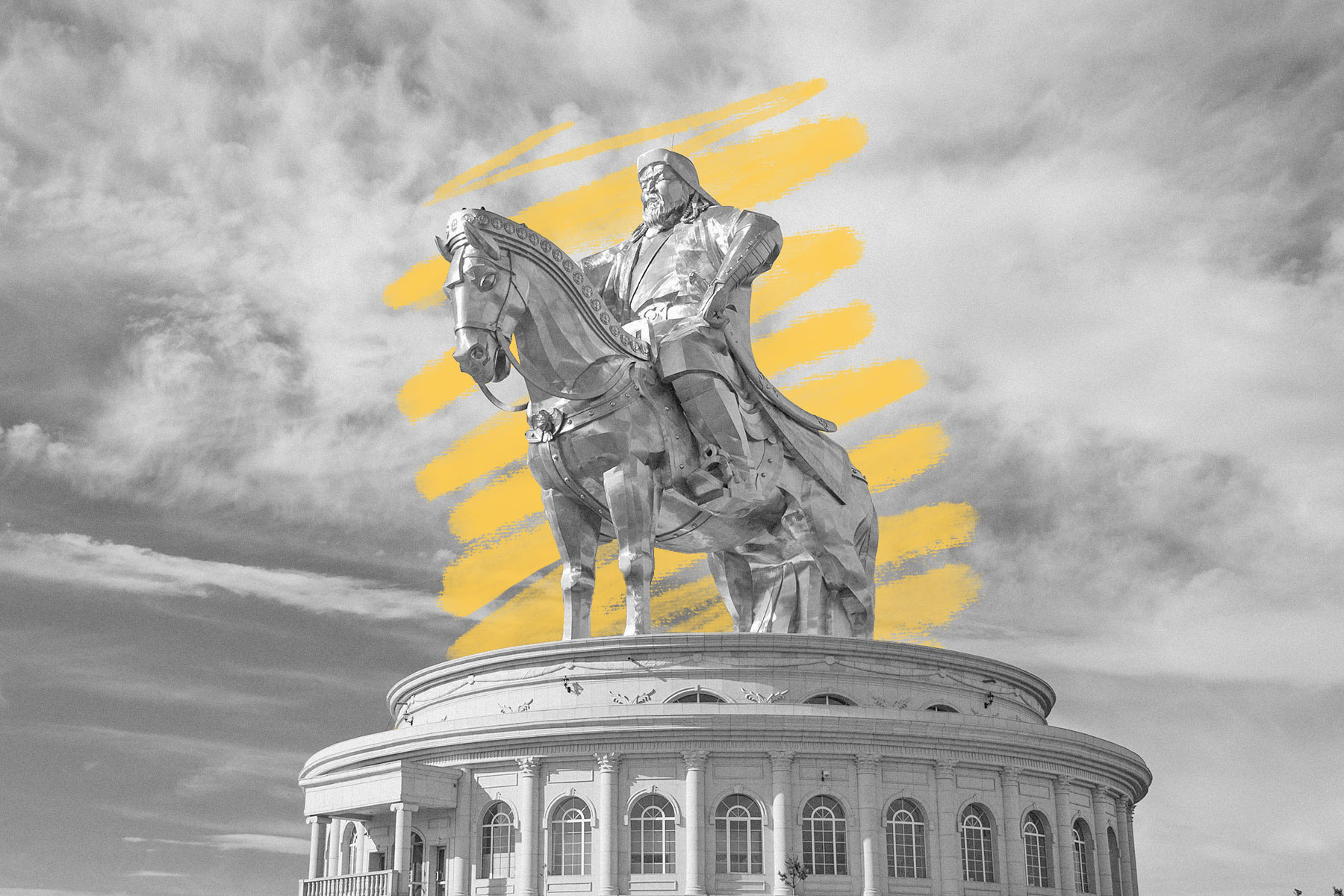The shocking size of the Mongol Empire
Monday, December 18, 2023
 |
The Mongol Empire is the largest contiguous land empire in history. |
World History |
 |
| |
| At its peak, the empire included all of modern-day China and Mongolia in addition to parts of Armenia, Georgia, Russia, Ukraine, Romania, Iran, Iraq, Pakistan, Uzbekistan, Afghanistan, and Korea, among others. (This map offers a sense of its vastness.) For all of Genghis' savvy, however, his descendants proved a fractious bunch who fought among themselves and oversaw his empire's decline; with the exception of his grandson Kublai Khan, few others in the dynasty are recalled fondly. Even so, Genghis' massive effect on the world might best be summarized by two staggering statistics: He was responsible for the deaths of as much as 11% of the world's population at the time, and 1 in every 200 men living today are his direct descendants. | |
 | |
 | |||||||||
By the Numbers | |||||||||
| |||||||||
| |||||||||
 | |||||||||
| |||||||||
No one knows where Genghis Khan is buried. | |||||||||
| Though Genghis Khan was one of history's most consequential figures, there are two things no one knows about the famed leader: what he looked like and where he's buried. The first is easy enough to explain, as he lived nearly 1,000 years ago and contemporaneous accounts of his appearance differ. The latter is a bit more unusual. Genghis wished to be buried in secret, and the army that escorted his body is said to have slain anyone it came across en route to his final resting place, lest those passersby tell anyone what they saw. After the burial, those same soldiers rode 1,000 horses over Genghis' grave to bury any trace of it along with him. There are also stories, most likely untrue, that the enslaved people responsible for burying him were then slaughtered so they couldn't share their knowledge, and that the guards who carried out this act were themselves killed by a second group of soldiers, who then took their own lives. Though the exact location of the grave remains a mystery, scholars believe Genghis is buried somewhere near Burkhan Khaldun, a mountain considered sacred by the Mongols. | |||||||||
 | |||
Recommended Reading | |||
 | |||
| | |||
 | |||
| | |||
| + Load more | |||
| |||
| |||||||||
| Copyright © 2023 History Facts. All rights reserved. | |||||||||
| 700 N Colorado Blvd, #513, Denver, CO 80206 | |||||||||
|
posted by June Lesley at 6:01 AM
![]()
![]()






0 Comments:
Post a Comment
<< Home